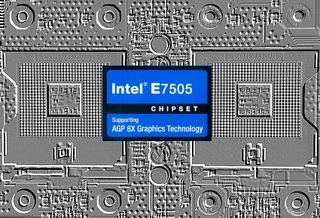Six Dual Xeon Motherboards on the Cheap
A Single Or Dual Platform?

A mainstream platform with lots of gigahertz that is based on a relatively-pricey Intel P4 or AMD Athlon64 doesn't always guarantee enough performance for professional-use applications such as CAD or OpenGL. These professional applications also demand enormous computing resources. The smarter choice is a dual-processor platform which, as we previously demonstrated in our introductory article Two Xeon CPUs Are Better Than One Intel P4 Extreme Platform , offers the requisite performance. Here, we look at and compare six dual Xeon motherboards and offer tips for choosing the right cooler and form factor.
The WTX Form Factor Is Costly, ATX Is Cheaper
The form factor is decisive, since only ATX boards fit in standard casings. A suitably larger case must be bought for the larger models in a WTX format.
That said, if you are forced to count pennies, you will want to consider an ATX dual-board, which Asus, MSI and Tyan supply. Performance freaks generally go for the WTX profile, which also involves the purchase of a tower and power supply.
Two trends can be observed:
On the one hand, there are boards for demanding users eager to exploit the full potential and features of their dual Xeon system. These models are equipped with 64 bit PCI slots, SCSI controllers and an integrated LAN interface. With a price tag of up to $550 (Tyan S2665UANF), these large boards are relatively expensive.
On the other hand, smaller boards are still available in an ATX format whose sole feature is two CPU sockets. These offer extremely good value. The MSI Master2-F, for example, can be had for as little as $240.
We have also taken a long and hard look at powerful active and passive coolers. With thermal power of 185 W, both processors indeed run hot.
Stay on the Cutting Edge
Join the experts who read Tom's Hardware for the inside track on enthusiast PC tech news — and have for over 25 years. We'll send breaking news and in-depth reviews of CPUs, GPUs, AI, maker hardware and more straight to your inbox.
Current page: A Single Or Dual Platform?
Next Page Cool Head For 185 W Thermal PowerTom's Hardware's dedicated news crew consists of both freelancers and staff with decades of experience reporting on the latest developments in CPUs, GPUs, super computing, Raspberry Pis and more.
Most Popular


